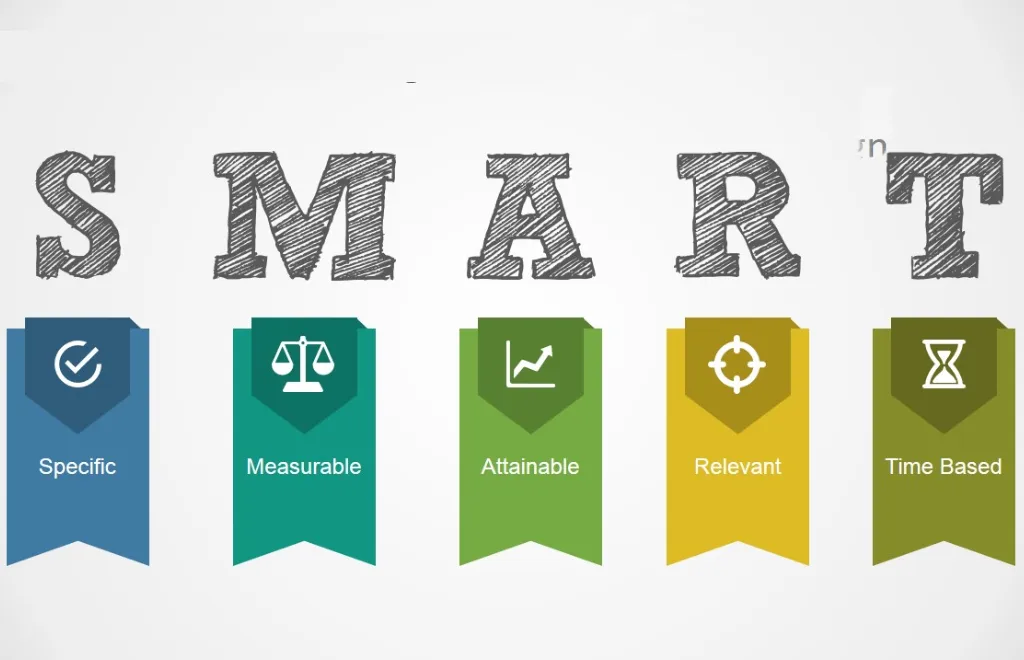How Do Long-Term Goals Differ From Short-Term Goals?
If you’ve ever been to a job interview or participated in any personal development class, leadership management or entrepreneurship training, you’ve probably been asked what your long-term and short-term goals are.
But how exactly do long-term goals differ from short-term goals? What is the role of a timeline in achieving goals?
Keep reading our blog and find out how long-term goals differ from short-term goals.

How do long-term goals differ from short-term goals
The main difference between long-term goals and short-term goals is the time frame in which they are expected to be achieved. Long-term goals typically span a more extended period, often quarters or years, while short-term goals are focused on immediate or near-future accomplishments within a shorter timeframe, usually weeks or months.
These sets of time-defined objectives are mostly applicable to career or professional planning. They’re, for example, usually questioned at job interviews. However, they can be part of several other areas of life. Let’s define these two concepts in detail.
What are short-term goals?
To set short-term goals, you should think about things you can accomplish soon, in a maximum period of one year from the moment you envision them.
In this category, we can discuss learning new job skills, saving a certain amount of money, improving your running pace, etc.
The main purpose of setting short-term goals is to keep you motivated, as you’ll be able to cross things off your list quicker.
This will give you a sense of progress, which can act as a real confidence booster.
Looking for different ways to keep you and the company’s employees motivated? Find in our article.

What are long-term goals?
Long-term goals are all about planning the future. They’ll take longer than one year to achieve and demand rigorous planning to be kept in motion over long periods of time.
Usually, the planning for long-term goals involves multiple steps, also known as smaller goals. It’s important to remember that since these plans take longer periods of time to achieve, they need to be adaptable.
Adjustments will need to be made for several unknown reasons when the goal is set. It’s perfectly fine and normal, dare we say expectable, that these types of goals change over time.
What matters is the focus you need to fulfill them and the meaning you give them.

Gratis e-bog: Sådan arbejder du smart, ikke hårdt
Get your copy of the eBook to discover top productivity tips for teams and their leaders
What is the difference between short and long-term goals?
Before discussing what differs them, remember that both types of time drive goals are essential for professional and personal development. Your long-term career goals will be helped and enforced by your short-term career goals.
Setting goals is extremely important. It’s not just another productivity method or time management technique.
It’s a crucial step in working towards personal development. Doing so keeps you motivated and actively working towards something. We all work to earn a salary, and with that money, we live our daily lives.
However, achieving goals and working towards them provides you with a sense of purpose, with satisfaction in your daily life.
Implementing goal planning keep you on track. If you struggle with being focused daily, having a goal makes it much easier to do so.
A group of goals, either long-term or short-term, provide you with direction. You have a roadmap to follow, even when life happens and things don’t go according to plan.
Flexibility and focus are probably the most important concepts to keep in mind regarding this topic.

The differences between long-term and short-term goals
They differ in terms of strategy since, with short-term goals, you need to work and focus on what you have available now.
Long-term goals demand a time commitment and require meticulous planning. This kind of goal can have an impact, usually a big one, on your life in general. For example, a job change impacts the course of your career, your schedule, your income, etc.
Short-term goals touch on specific parts of your life. Enrolling in a language course for a year will impact your life for that time. Fitness goals, for example, will impact your daily mood or energy level right from the beginning.
Achieving something in a shorter timeframe will contribute to a sense of satisfaction and progress. A longer-time goal is more complex, and its result can have a larger, more overwhelming effect on your life.
In terms of flexibility, short-term goals are more rigid since time is a constraint. The deadlines are tighter, thus making changes to plans more difficult.
However, long-term goals will depend on the smaller parts of the plan that you set in motion. If you’re trying to learn a language as a short-term goal, you need time to study every day and attend classes more intensively.
If this same goal is made into a long-term one, you can space out classes and take a more flexible course. It all depends on what you need and want.
- Read about Warren Buffet’s 5/25 rule for goal-setting.
The similarities between long-term and short-term goals
- Both kinds of goals offer a sense of purpose and direction;
- Both require the application of the S. M. A. R. T. goals method, which we’ll explore further in this article;
- Maybe most importantly, both are dependent on each other.
| Short-Term Goals | Long-Term Goals | |
|---|---|---|
| Secure funding and prepare a business plan. | ➡️ | Open a business. |
| Fulfill your yearly performance KPIs. | ➡️ | Being promoted to team leader. |
| Prepare for the admission interview. | ➡️ | Get a master’s degree. |
| Open a savings account and set a monthly savings goal. | ➡️ | Buy a house. |

What are S. M. A. R. T. goals, and why are they important?
The S. M. A. R. T. method is a great tool to use to reach goals and objectives and is a common technique for both short and long-term goals.
Author Charles Duhigg, known for his research on productivity, habits, and work culture, explored dividing work into a combination of big goals and S.M.A.R.T.
Setting goals is important because they’re one of the most effective ways to get things done. The big ones keep the focus on the finish line, and the S.M.A.R.T. method works like a ladder, as a group of steps one has to climb. This acronym means:
- S - Specifik
- M - Målbar
- A - Opnåelig
- R – Realistic / Relevant
- T - Tidslinje
S. M. A. R. T. goals set you up for success by making goals specific, measurable, achievable, realistic, and timely. This method applies to personal and career goals.
The specificity of this method provides the clarity to smartly use your short-term goals to reach your long-term goals. Plans become more tangible and closer to being completed.

Konklusion
Knowing the difference between short-term and long-term goals is a large step toward success. Short-term goals can be a great vehicle toward long-term goals by becoming strategic objectives.
We can say that a person can have several short-term goals. Their short timespan and achievability contribute towards that.
Long-term goals are usually thought of on a larger scale and are more complex. They require a lot of time and effort, so a person planning for these has many factors to consider.
Every person, in their personal and professional paths, should have a good mix of short-term and long-term goals.
Having these will “force” you to improve soft and hard skills. Patience, time management, budgeting, etc. Companies, businesses, and work teams, also have short-term and long-term goals.
That’s why there are quarterly reviews, yearly performance reviews, yearly budget meetings, and so on.
Go ahead and prepare your goals list. Get to work and take it one step at a time. This way, you’ll reach success.
Du er måske interesseret i: